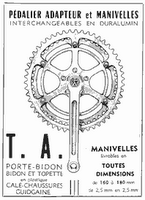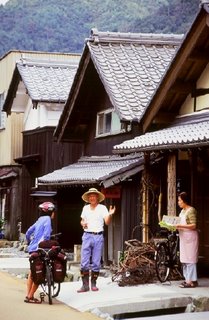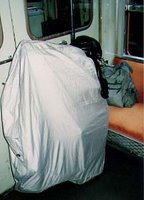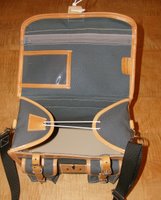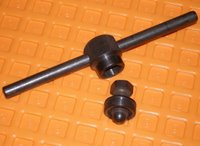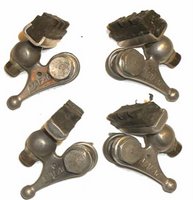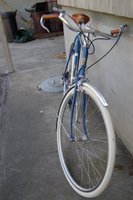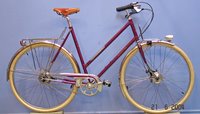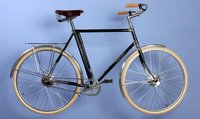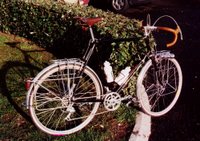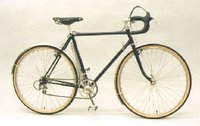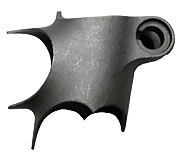
One of our favorite spots in Europe is the Tuscan hill town of Montepulciano. We have spent many weeks there, lodged in Ivana and Giorgio's 14th century inn, the
Mueble Il Riccio. In the morning we cross the square to our favorite cafe for cappuchinos. The days are taken up touring the surrounding vineyards, fattorias ( farms), and villages. And, in the evening, we walk a few blocks down the hill to our favorite Osteria where the owner and Miche (the cat) introduce us to the simple food grown and raised at the fattorias in the valley. Then it's a stroll around town and a glass of wine on the roof-top terrace above our room.
Among the reasons we love Montepulchiano is that it is closed to non-resident car traffic. The sound of the town is conversation, laughter, singing, and music (from the music school), not the din of traffic. But Montepulchiano is not unique in this; thousands of European towns have closed their gates to the motorcar. Even car dependant cities are closing streets and whole neighborhoods to motorized vehicles. In car choked Athens I have walked block after block on streets open only to bikes and pedestrians. London has imposed an onerous tax of about $13.50 per day on anyone who wants to drive into the city. In the Dutch town of Groningen some 60% of people travel by bike thanks to wise long term civic planning.
The benefits of car free areas, and even whole town and cities, are enormous and as more people see them there is a call bar motorized vehicles from even more areas, and to build new neighborhoods designed primarily with the pedestrian and bicyclist in mind. Noise, pollution, maintenance, and danger decrease. While health, a sense of community, and aesthetics improve. There are even economic benefits as retailers and other buisness people, who often initially oppose such plans, find that shoppers flock to such areas finding them far more pleasent than the mall or box store.

If you want to find out more about car free cities, you might try the
Carfree.com site. James Howard Kuntsler's
Geography of Nowhere and
Home from Nowhere are shocking in their clarity. Architects
Andres Duany,
Elizabeth Plater-Zyberk, and
Jeff Speck, who are credited with restarting the new urbaninst movement, wrote
Suburban Nation, a well thought out work on post modern civil planning and architecture.
With irrefutable evidence of global warming and peak oil, this may be a good time to follow the lead of the Europeans and the New Urbanists. And if I may make a political comment: the idea that there is any doubt in the scientific community about the reality of both global warming and peak oil, is the biggest lies ever told by certain politicians.

When someone ask me why I so love Montepulciano, I tell them that it is the most civilized and most advanced place I have seen. The growth of civilization is measured not by the rush toward the bigger and the more technological, but by the wisdom to choose what technology is appropriate and what should be limited or even discarded. On that limestone ridge upon which Montepulchiano sits, there has been a settlement since at least Etruscan times, and probably well before. The Tuscans here have had thousands of years to build a civilization and to decide what is truly valuable. Among the things they most passionately preserve are streets for people, good wine, locally grown food, music, art, and, of course, the bicycle.
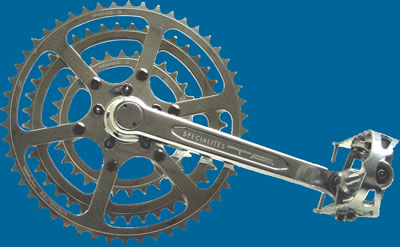 As you may know TA Cyclotouriste cranks, which are officially called the Pro Vis 5 went out of production last year. But my French connection has just learned that as part of their 60th Anniversary hoopla, TA will make one last run of these cranks. Naturally I ordered about 25 pair immediately.
As you may know TA Cyclotouriste cranks, which are officially called the Pro Vis 5 went out of production last year. But my French connection has just learned that as part of their 60th Anniversary hoopla, TA will make one last run of these cranks. Naturally I ordered about 25 pair immediately.